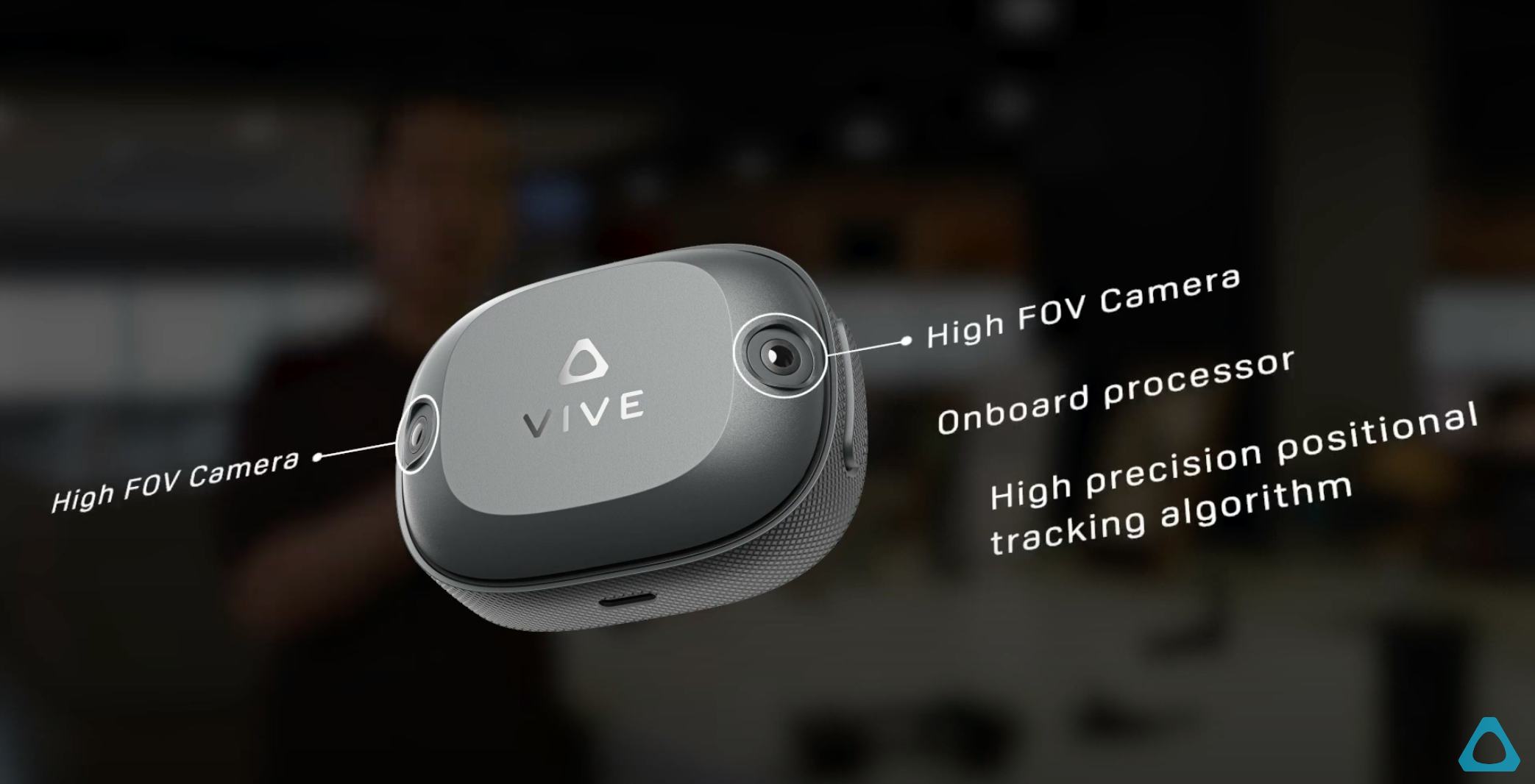
HTC might have the new must-buy virtual reality accessory. The company introduced its latest Vive Tracker via YouTube video this week, promising an easy and compact way to add inside-out tracking to almost anything when it goes on sale later this year.
Multiple generations of trackers have come and gone, but all have relied on the base station system HTC and Valve first introduced with the original Vive. Rather than use infrared lights to track horn-shaped protrusions strapped to your body, the new trackers use the same tracking method as most modern headsets — cameras — to bring the rest of your body and props into a virtual world. It could be the simplest possible solution to the “missing leg” albatross around Meta’s neck.
Compact and Less Annoying

The self-tracking accessory — HTC says there’s no official name yet — features two “high field of view” cameras and an onboard processor to determine the location of whatever you attach it to using the same algorithm as the company’s current VR hardware. The hardware has a certain puck-like quality, which is lighter and more streamlined than previous trackers. Technically lighter than any tracker it's released before at “under 100 grams,” according to HTC.
The device isn’t only for tracking limbs or props, though. HTC says the new tracker includes a hot-swappable UNC mount, as you might find on camera and audio equipment, so creators, like VTubers, should be able to slot it into existing virtual production environments too. The point is the tracker is flexible — you can get full-body tracking on a standalone device like the Vive XR Elite and more of the simplicity of standalone devices in a PC VR environment, all using the same accessory.
At Last, Legs
Finding some way to incorporate your lower body movements (or your arms without controllers) is key to the actual metaverse experiences that are available right now. Plenty of serious VRChat users own or have tried HTC’s original VR trackers, which makes Meta’s seeming embarrassment over the missing limbs in Horizon Worlds understandable, but not exactly necessary, considering solutions do exist.
HTC, for its part, is making these new trackers support OpenXR as well, which means you could theoretically use them with any VR headset that supports the same open standards. The question is, will Meta, as the other major producer of VR hardware, bite? Strapping any device to your body is not exactly the futuristic experience the owner of Facebook is trying to push with its metaverse project, but it works. Maybe the answer to missing legs in VR is accepting that you’ll look dorkier in real life.
HTC plans on releasing the self-tracking Vive Tracker in Q3. The company didn’t share a price for the accessory, but interested developers can learn more on the Vive website.







